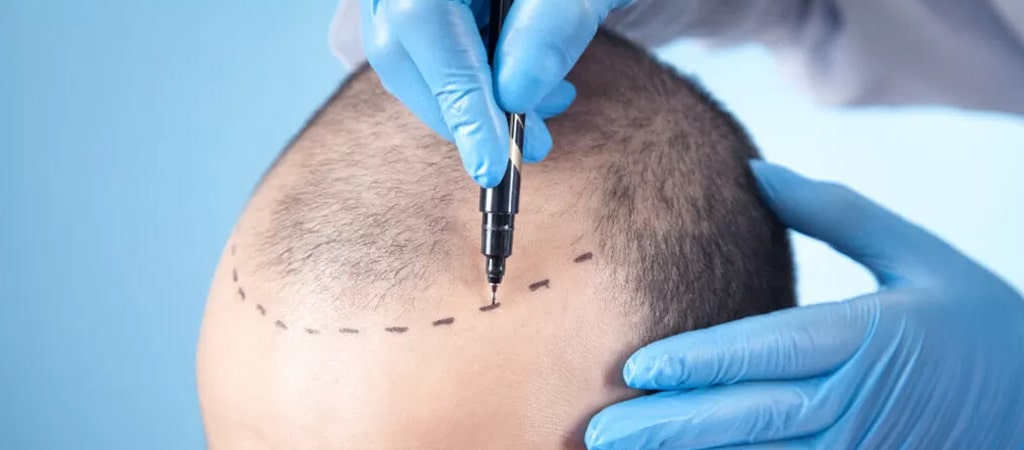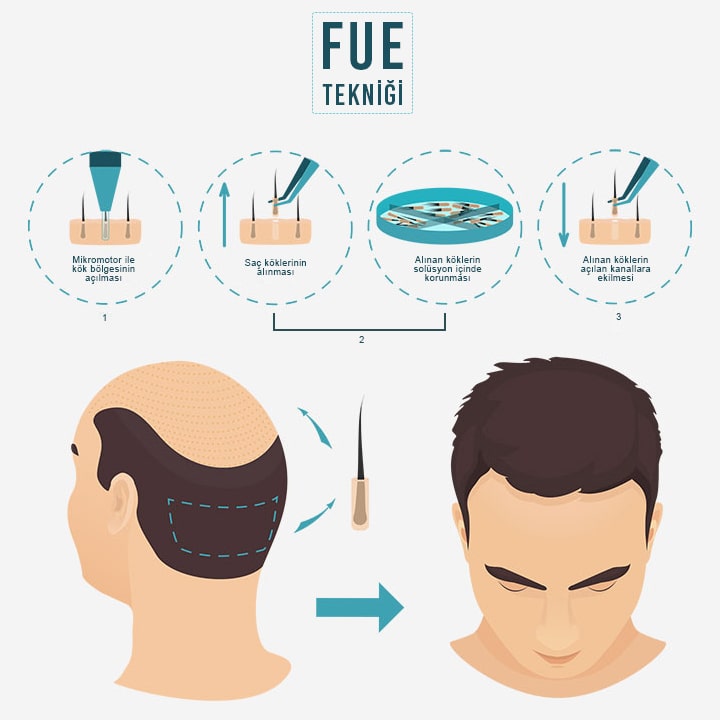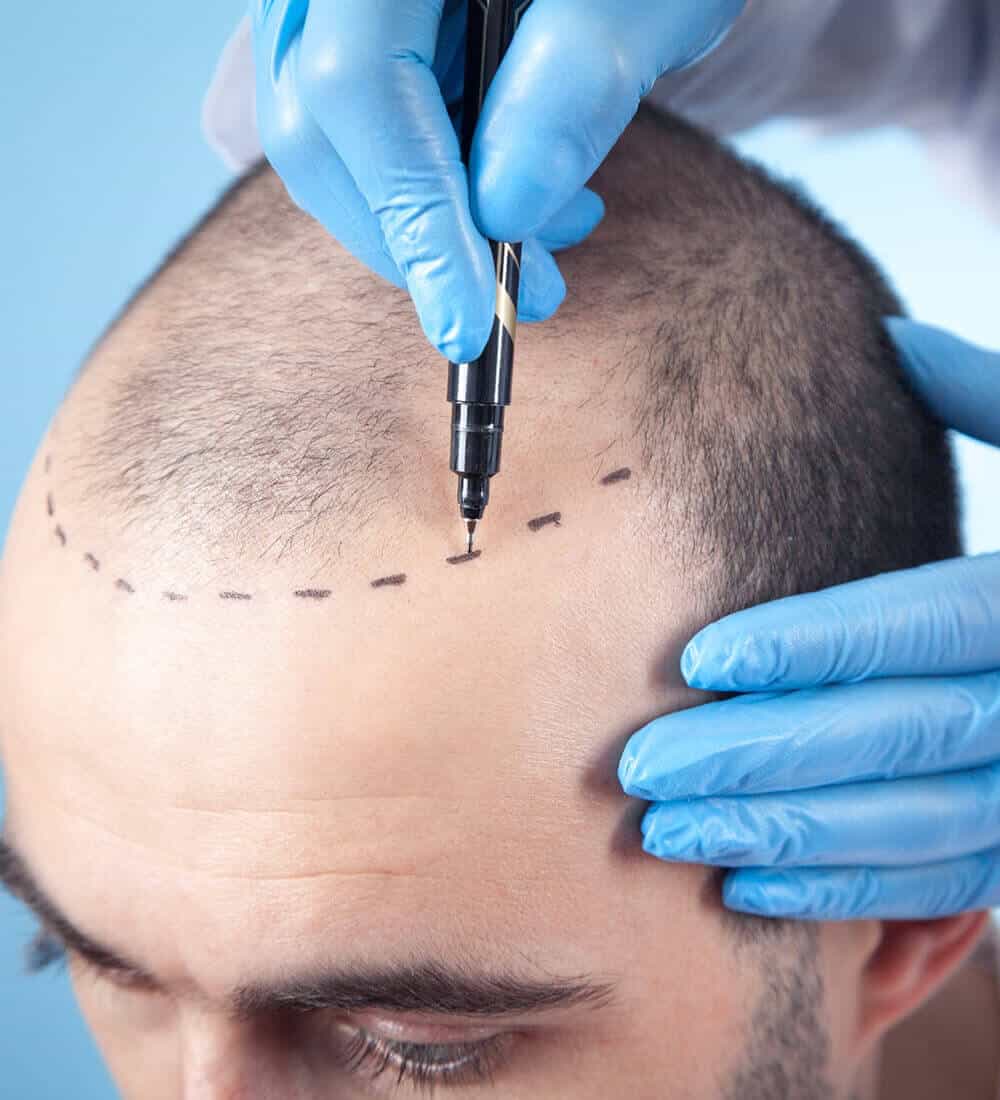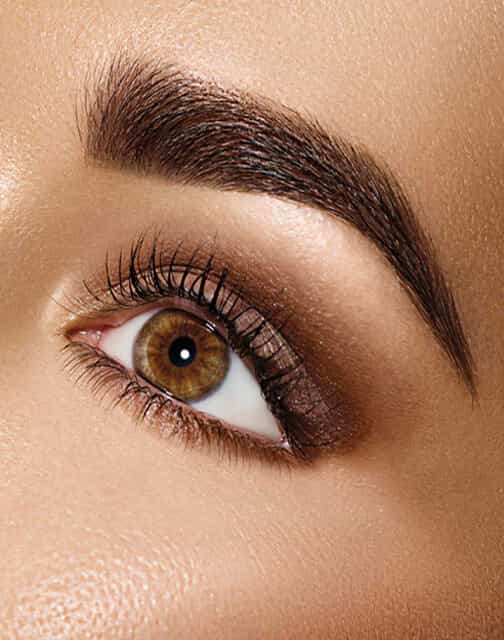What is a FUE Hair Transplant?

FUE hair transplantation (Follicular Unit Extraction) is a hair transplantation treatment for permanent and natural elimination of problems related to hair loss (baldness).
A Hair transplant has 3 stages, which include:
- The collection of hair follicles from the donor area (usually the nape of the neck),
- Channel opening
- Transplantation of hair follicles into the opened channels
Hair transplantation is based on the procedure of transferring hair follicles (grafts) from the donor area to the area of hair loss. A FUE hair transplant treatment is a technique that cures baldness. The whole procedure can take approximately 7-8 hours. The patient’s own hair is transferred meaning it’s natural and can be used for a lifetime. Today, this method is a successful solution for women as well as men.

Who Is A FUE Hair Transplant Suitable For?
People experience hair loss due to many reasons such as genetic factors, hormonal imbalances, skin diseases in the scalp, unhealthy diet and stress. FUE hair transplantation is a suitable method for men and women over the age of 18 who are suffering hair loss and baldness.
A FUE hair transplantation is a fairly comfortable procedure for the patient under the supervision of an expert team. In the consultation before the procedure, factors such as patient age, hair structure, and the condition of the hair follicles are the determining factors of the procedure going ahead.
How Is A FUE Hair Transplant Procedure Performed?
It is vital that the FUE hair transplantation procedure is operated by a specialist team. Before the procedure, an examination with the practitioner will determine how the hairline will be. For a natural look, the hairline must be analyzed and then a drawing will be made along the hair border. Then the areas of hair loss, reduction and baldness are analyzed. The areas that have been identified for transplantation of hair follicles will then be shaved. The donor area is also shaved – shaving the donor area makes it easier to harvest hair follicles with the micromotor method. A local anesthesia will be applied to the area of where the follicles will be harvested.
The nape area is most preferred for graft harvesting because it has more durable roots. The hair follicles are collected with the help of a micro motor and preserved in a special solution until use. After the specified number of follicles are harvested, the area to be transplanted is numbed and the canal opening stage is started. After the canal opening has completed, the last stage being the hair follicle transfer, starts. The hair follicles are transplanted into the channels one by one and the process is completed with PRP to increase the retention rate of the follicles and for a healthy healing process. The procedure is completed in approximately 7-8 hours.
What Is Recovery Like After A FUE Procedure?
Mild redness and swelling on the skin during recovery is quite normal and is only temporary.
The first wash is done on the fourth day after the operation. The patient may do the wash with the shampoo recommended by the practitioner, or this step can also be done in the clinic. After a week, the expected crusting starts to occur, and at the end of 2 weeks, the crusting falls off and the transplanted roots take over the area. Approximately 1 month after transplant, shock shedding starts to occur. This phase usually ends after the second month making room for healthy and permanent growth in place of the lost hair. After the procedure, the patient should not participate in heavy sports for approximately 1 month and should avoid the sun, saunas, hot baths, solariums, pools, the sea and any activities that may cause impact. Accessories that cover the head should not be used during this period also.
Stages After Hair Transplantation
Washing Of The Head
The first wash is done on day 4 after the procedure. This step can be done at the clinic, or at home.
- Warm water with the shampoo and aftercare lotions recommended by the practitioner should be used.
- The transplanted area should be washed with light movements without pressing or pressure.
- A hair dryer on the warm setting used at a distance can be used. A towel for drying the hair must not be used.
- External cosmetic products other than those recommended for hair should not be used.
Crust Loss
After a hair transplant, the crusts fall off in about 2 weeks. At the end of this period, the crusts that did not fall off are softened to shed by using the special care lotion provided for washing.
Shock Shedding
In the first month after a hair transplant, the expected shock shedding starts to occur. In this phase, the transplanted hair falls out but the hair follicles are not damaged in the process. This phase decreases from the second month and ends completely in the third month.
Growth Of The Transplanted Hair
This is a time-consuming process. The shock shedding phase and the phases before must be completed.After the shock shedding, the transplanted hair follicles are completely attached to the tissue they are in and the growth phase begins. The hair that grows from the third month onwards is thin and sparse. It takes about 6-7 months for more dense and vibrant hair to appear. At the end of one year, the patient completely regains natural and healthy hair.
Advantages Of A FUE Procedure
FUE hair transplantation is a treatment that has been used for many years. Some advantages of this method, which provides recovery in a short time, are as follows:
- Hair transplantation with the FUE method offers natural results and protects the donor area from any trauma.
- It provides a more dense and natural appearance.
- With this technique, permanent treatment is provided in mild-moderate-severe cases of hair loss.
- It is a painless and comfortable technique.
- Recovery and the ability to return to daily life after the FUE method is fast.
- Hair follicles taken in the FUE treatment are transferred without damage.
FUE Hair Transplant FAQs
What is the best season for a FUE hair transplant?
What is the best season for a FUE hair transplant?
Every season is suitable for a FUE hair transplantation, however in winter, it is easier to protect the scalp from the sun.
After a Fue hair transplantation the area should not be exposed to sunlight in summer. Extra care should be taken not to stay in the sun too much after a hair transplant treatment. As long as this is taken into consideration, a FUE procedure can be performed easily at any season.
What is the number of grafts required for a hair transplant?
What is the number of grafts required for a hair transplant?
he number of grafts required in FUE hair transplantation varies according to the width of the area to be transplanted. The number of grafts required is analyzed and determined in the consultation with the practitioner.
Which hair transplant technique is right for me?
Which hair transplant technique is right for me?
The techniques used in hair transplantation are FUE and DHI. It is best to discuss and decide on the options during the hair analysis at the consultation with the practitioner.
Can a person with no hair have a hair transplant?
Can a person with no hair have a hair transplant?
Hair transplantation is performed with hair follicles taken from the patient. If there is not enough hair in the donor area, transplantation cannot be performed.
Can women undergo a hair transplantation procedure?
Can women undergo a hair transplantation procedure?
Yes. Women can have hair transplantation if there is enough hair in the donor area.
Which procedures are performed with hair transplantation?
Which procedures are performed with hair transplantation?
In order for the hair that grows after transplantation to be stronger and healthier, procedures such as hair PRP and hair mesotherapy can be applied together with the transplantation.
Is there any scarring after the procedure?
Is there any scarring after the procedure?
No. The donor area heals within 1-2 weeks after the root extraction and there is no scarring.
What should I be eating after a hair transplantation procedure?
What should I be eating after a hair transplantation procedure?
After hair transplantation, salt consumption should be reduced and foods rich in vitamins and minerals that strengthen hair follicles should be consumed.
Alcohol and tobacco use should be avoided after a hair transplantation.
What age limit can hair transplantation be performed?
What age limit can hair transplantation be performed?
It is vital that hair loss in the patient is completed. Every individual who has completed the shedding phase can have a transplant.





